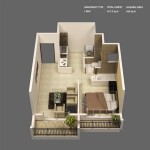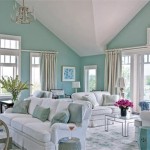How Much Do Interior Designers Make Per Year?
The field of interior design offers a blend of artistic creativity and practical problem-solving, attracting individuals with a passion for aesthetics and functional space planning. A common question for those considering this career path is, "How much do interior designers make per year?" The answer, however, is not a simple figure, as numerous factors influence earning potential in this profession. This article will delve into the various aspects that contribute to the annual income of interior designers.
Understanding the salary range for interior designers requires consideration of experience level, education, specialization, geographic location, and employment type. A junior designer with limited experience will naturally earn less than a seasoned professional with a well-established reputation and a diverse portfolio. Similarly, designers focusing on high-end residential projects may command higher fees compared to those working on smaller-scale commercial designs. This article aims to provide a comprehensive overview of these factors to offer a realistic understanding of potential income in the interior design field.
Experience and Education Impact on Salary
One of the most significant determinants of an interior designer's salary is their level of experience. Entry-level positions, such as junior designer or design assistant roles, typically offer lower starting salaries. These roles are designed to provide practical experience and mentorship under more senior designers. As individuals gain experience, their responsibilities increase, and they develop a more comprehensive understanding of design principles, project management, and client communication. This enhanced skill set translates into higher earning potential.
Education also plays a crucial role in salary determination. A bachelor's degree in interior design or a related field (such as architecture or fine arts) is generally considered the standard requirement for entering the profession. A degree program equips individuals with the foundational knowledge of design theory, space planning, building codes, and drafting software. Some designers pursue a master's degree to specialize in a specific area, such as sustainable design or healthcare design. Advanced education can lead to higher starting salaries and increased opportunities for career advancement.
Beyond formal education, professional certifications can also positively impact earning potential. Organizations like the National Council for Interior Design Qualification (NCIDQ) offer certifications that demonstrate competency and adherence to industry standards. Earning an NCIDQ certification often requires passing a rigorous examination and meeting specific experience requirements. This certification can enhance credibility with clients and employers, potentially leading to higher salaries and more prestigious job opportunities.
Furthermore, continuing education and professional development are essential for staying current with industry trends and technologies. Interior design is a constantly evolving field, with new materials, software, and design philosophies emerging regularly. Designers who invest in ongoing learning demonstrate a commitment to excellence and are better positioned to adapt to changing client needs and market demands. This adaptability and expertise can translate into higher fees and increased job security.
Geographic Location and Market Demand
The geographic location of an interior designer's practice significantly influences their earning potential. Metropolitan areas with a high concentration of affluent residents and a thriving real estate market typically offer higher salaries compared to rural areas or regions with a lower cost of living. Cities like New York, Los Angeles, San Francisco, and Chicago are known for their robust design industries and correspondingly higher compensation levels.
The demand for interior design services also varies by region. Areas experiencing rapid population growth or economic development tend to have a greater need for interior designers to work on residential, commercial, and hospitality projects. Conversely, regions with stagnant or declining economies may offer fewer opportunities and lower salaries. Designers who are willing to relocate to areas with higher demand can often increase their earning potential.
In addition to location within a country, international opportunities can also impact salary. Designers working on international projects or based in countries with a stronger economy and higher design fees can often command higher salaries than their counterparts working solely within their home country. However, international assignments may also require specialized skills, such as fluency in multiple languages and familiarity with local building codes and cultural preferences.
The cost of living in a particular area is another important consideration. While some cities may offer higher salaries, the increased cost of housing, transportation, and other expenses can offset the financial benefits. Designers should carefully evaluate the overall financial implications of working in a specific location, taking into account both income and expenses.
Employment Type and Specialization
The type of employment arrangement an interior designer chooses also affects their annual income. Designers can work as employees of established design firms, architectural firms, or retail companies. Alternatively, they can operate as independent contractors or establish their own design businesses. Each employment type comes with its own set of advantages and disadvantages in terms of income potential, job security, and benefits.
Employed designers typically receive a fixed salary or hourly wage, along with benefits such as health insurance, paid time off, and retirement contributions. While the income potential may be more predictable, it may also be limited by the employer's salary structure. Independent contractors, on the other hand, have the potential to earn significantly more, as they can set their own rates and work on multiple projects simultaneously. However, they are also responsible for managing their own finances, marketing their services, and securing their own health insurance and retirement benefits.
Starting a design business requires significant investment in time, resources, and marketing efforts. It can take several years to build a strong client base and establish a profitable business. However, successful business owners have the potential to earn a substantial income and enjoy greater autonomy and flexibility in their work.
Specialization within the field of interior design can also impact earning potential. Some designers specialize in residential design, focusing on creating comfortable and aesthetically pleasing living spaces for homeowners. Others specialize in commercial design, working on projects for offices, retail stores, restaurants, and hotels. Still others may specialize in niche areas such as healthcare design, sustainable design, or kitchen and bath design. Designers with specialized expertise are often able to command higher fees, as their skills are in high demand for specific types of projects.
Interior design is a dynamic profession offering diverse opportunities for those with a passion for design and a commitment to continuous learning. The annual income of interior designers varies considerably based on a multitude of factors, emphasizing the need for careful consideration of individual circumstances and career goals.

Interior Designer Salary How To Make More Money As A 2024

How Much Does An Interior Designer Cost In 2024 Decorilla

How Much Does An Interior Designer Cost 2024 Forbes Home

How Much Do Interior Designers Charge

Here S How Much Money Interior Designers Make In Every State

How Much Does An Interior Designer Cost Checkatrade

Interior Designers Occupational Outlook Handbook U S Bureau Of Labor Statistics

Interior Designer Vs Decorator What S The Difference Forbes Home

How Much I Make Being An Interior Designer Tiktok Search

How Much Interior Designer Earns Italian E Learning Fashion School
Related Posts








